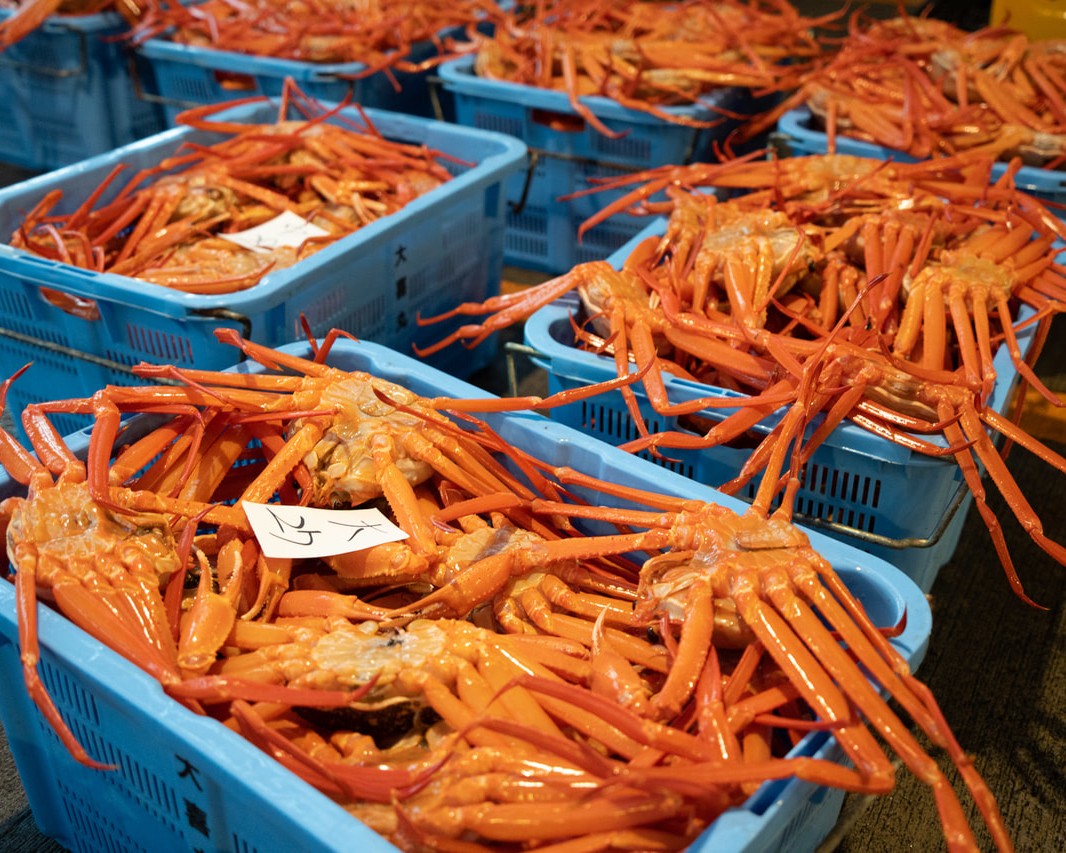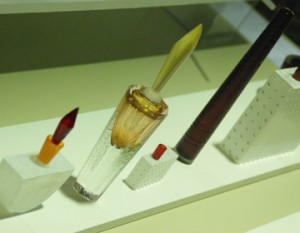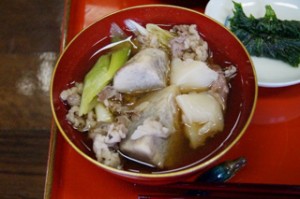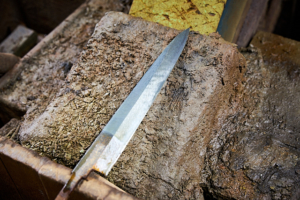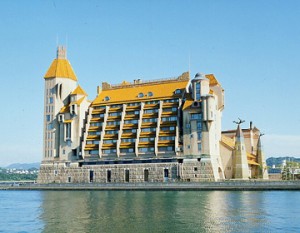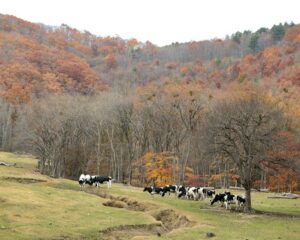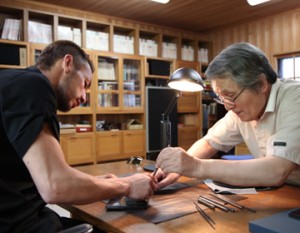Fukui Prefecture’s only red snow crab fishery
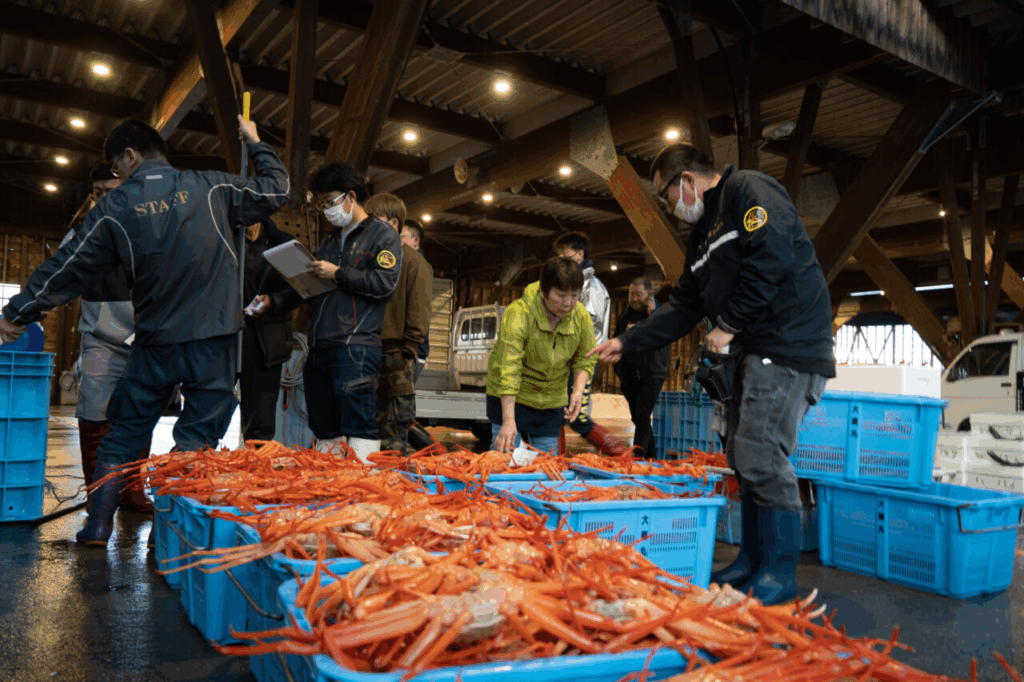
Male snow crabs are branded under different names depending on the fishing port where they are landed, such as “Matsuba Gani” in the San’in region and “Kano-Gani” in Ishikawa Prefecture. Among them, the male Echizen crab landed at a fishing port in Fukui Prefecture is known as one of the highest quality crabs, and is the only crab presented to the Imperial Household in Japan. The female Echizen crab is called “Seiko crab” in Fukui Prefecture. It is about one-third the size of “Echizen crab” and relatively reasonably priced, making it easier to eat and more popular.
As many as 40 snow crab fishing boats
In Fukui Prefecture, Echizen Fishing Port, Mikuni Port, Tsuruga Port, and Obama Port are the ports where snow crab is landed. Echizen Fishing Port in Echizen Town boasts the largest catch in Fukui Prefecture. It is located in the middle of the Echizen coast, which is designated as a national park, and there are 40 snow crab fishing boats based here. In the home of snow crab fishing, only the “Taikimaru” catches red snow crabs. In the past, there were other boats that caught red snow crab in addition to snow crab, but “Echizen crab” became a brand name and was sold at a high price, so all boats except ours shifted to snow crab fishing. We did not have a permit to fish for snow crab, so we did not enter the market and continued to catch only red snow crab. says Mr. Yamashita.
Red snow crab caught in deeper waters
As its name suggests, the red snow crab is characterized by the bright red color of its shell. Unlike snow crabs, which live at depths of 200 to 400 meters, the habitat of red snow crabs is extremely deep, ranging from 500 to 2,500 meters.
The snow crab is caught by bottom trawl, while the red snow crab is caught in crab cages, which is a different fishing method. Crab cage fishing is a fishing method in which crab bait is placed in a cage and sunk to the bottom of the sea to catch crabs that have entered the cage. Unlike bottom trawling, sand does not enter the cage, preventing sand from entering the crab’s shell and degrading the quality of the crab.
Red snow crab can be caught for a long period of time.
The fishing season for snow crab is fixed, and the male Echizen crab is caught from November 6 to March 20, a period of about five months. The female Seiko crab is caught from November 6 to December 31, less than two months due to resource conservation.
On the other hand, the fishing season for red snow crab is 10 months long, from September 1 to June 1. Snow crab boats make a living by catching flounder, sea bream, horse mackerel, etc. from spring through fall, when crab fishing is prohibited. Incidentally, since the fishing of female snow crabs is prohibited, only male snow crabs are consumed.
The “Growth Potential” of Fukui Prefecture Red Snow Crabs
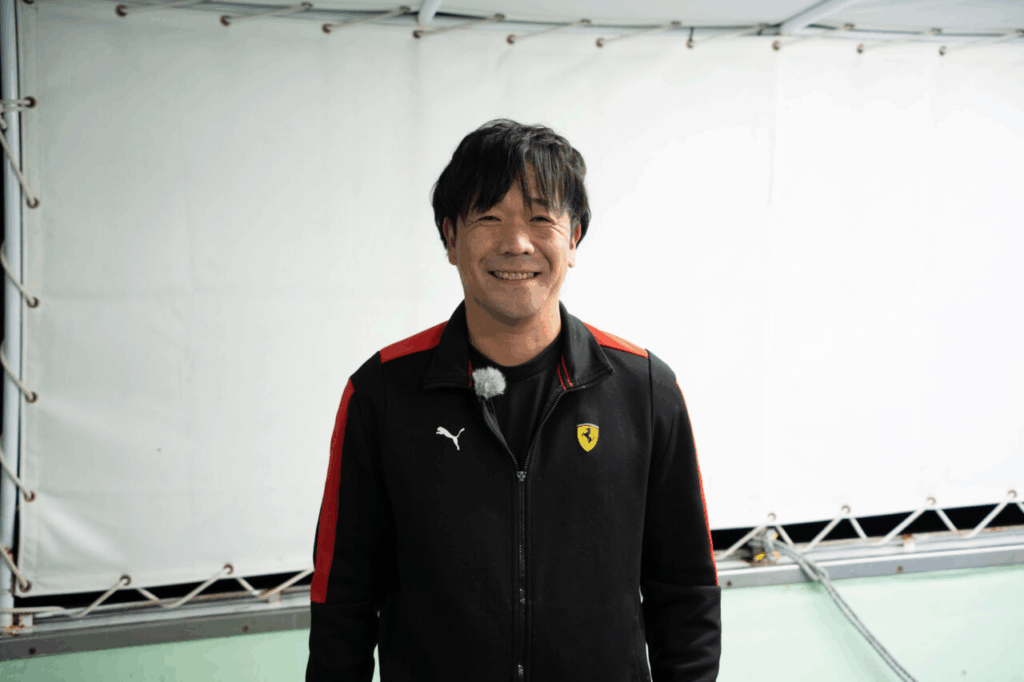
Compared to snow crabs, red snow crabs are more reasonably priced due to the longer fishing season and the ability to secure a good catch. Compared to Echizen crab, which is a male snow crab, the price is about one-fourth to one-fifth of the auction price. However, there is room for growth for red snow crab,” says Captain Yamashita. In particular, Captain Yamashita is confident that the price of red snow crab caught in Fukui will continue to grow. Toyama and Tottori are famous for producing red snow crab. Compared to them, Fukui red snow crab is larger in size and therefore more expensive. In fact, the auction price of red snow crab caught by “Taikimaru” has been rising steadily since Mr. Yamashita took over as captain. This is due to Captain Yamashita’s tireless efforts to increase the value of red snow crab.
Taking over the ship and embarking on reform
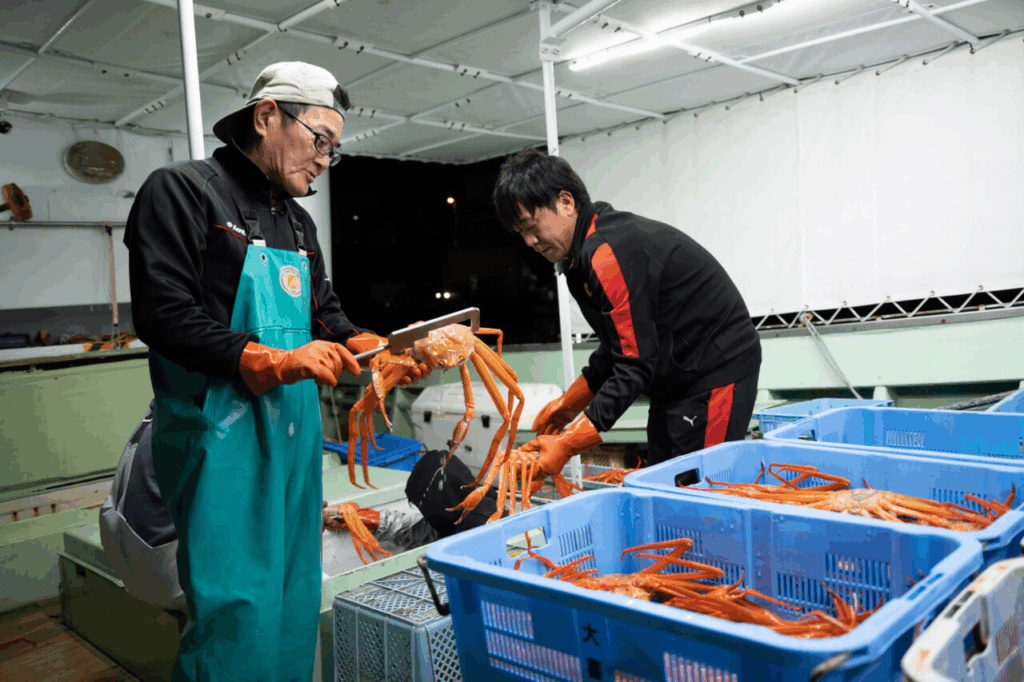
Captain Yamashita was born in Nagoya, Japan. He started fishing for red snow crab in 2008, and in 2015 he took over as captain from his predecessor, increasing the proportion of high value catches such as the extremely scarce and rare “golden crab” and large size red snow crab. The company has increased the percentage of high-value catches such as “golden crab” and large-sized red snow crab, which are extremely scarce and rare.
When Mr. Yamashita became captain, the “Daiki Maru” red snow crab fishery was in crisis. The unit price of red snow crab was slumping, and the large amount of expenses were weighing heavily on the company. With business conditions becoming increasingly difficult, the first thing Mr. Yamashita did was to reduce the catch. The catch of red snow crab was higher per operation than that of snow crab, and this was one of the reasons for the price collapse. Therefore, Captain Yamashita reduced the number of crab baskets and thoroughly released crabs with a shell width of less than 9 cm. Only red snow crabs that could be marketed with confidence were selected for shipment. As a result, although the volume of landings decreased, the high quality of the crab was recognized and the unit price per kilo increased.
Resource Management Efforts
Captain Yamashita attached a sign to immature red snow crabs when he released them, and recorded the condition of the crabs when they were caught again. Analysis of these results showed that crabs released between November and the following May grew better, and that releasing crabs during the low water temperature period was more effective.
Furthermore, a survey conducted in cooperation with the Fukui Prefectural Fisheries Experiment Station revealed trends such as depths and fishing grounds where high quality red snow crabs with hard shells are easily caught, leading to more efficient operations.
The modernization of the red snow crab fishery has enabled “Daiki Maru” to shift to a “quality over quantity” approach to crab fishing, and the company has worked to further brand its high-quality red snow crabs.
The new brand “Koganegani” (Golden Crab)
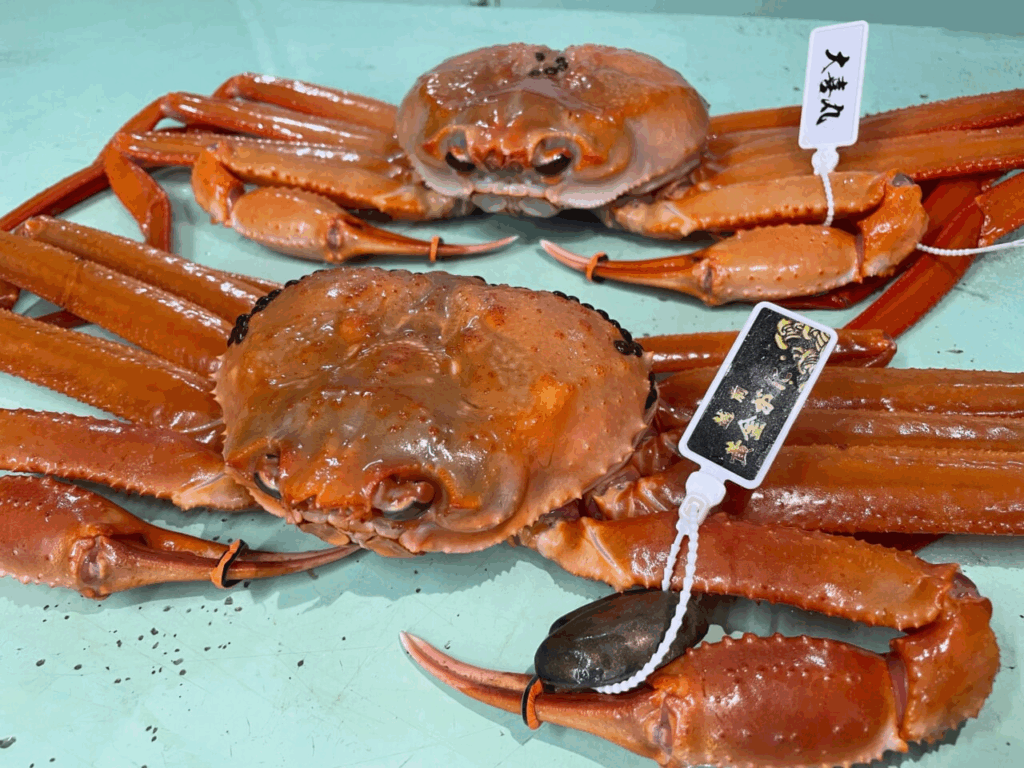
The “Taikimaru” catches 1,000 to 2,000 red snow crabs per fishing trip. Of these, only 5 to 10 are golden red snow crabs. Captain Yamashita ships them as live crabs under the brand name “ Koganegani” (golden crab). Koganegani” is a crab that grows between a male snow crab and a female red snow crab, and it has the advantages of both, with the thick meat of a snow crab and the sweetness characteristic of a red snow crab. Although it is difficult to tell them apart at first glance, the golden crab has a harder shell with thorny edges and a slightly lighter coloring and a white belly than the red snow crab. Because of its rarity, it is traded at two to three times the price of red snow crab.
Sorting and shipping live
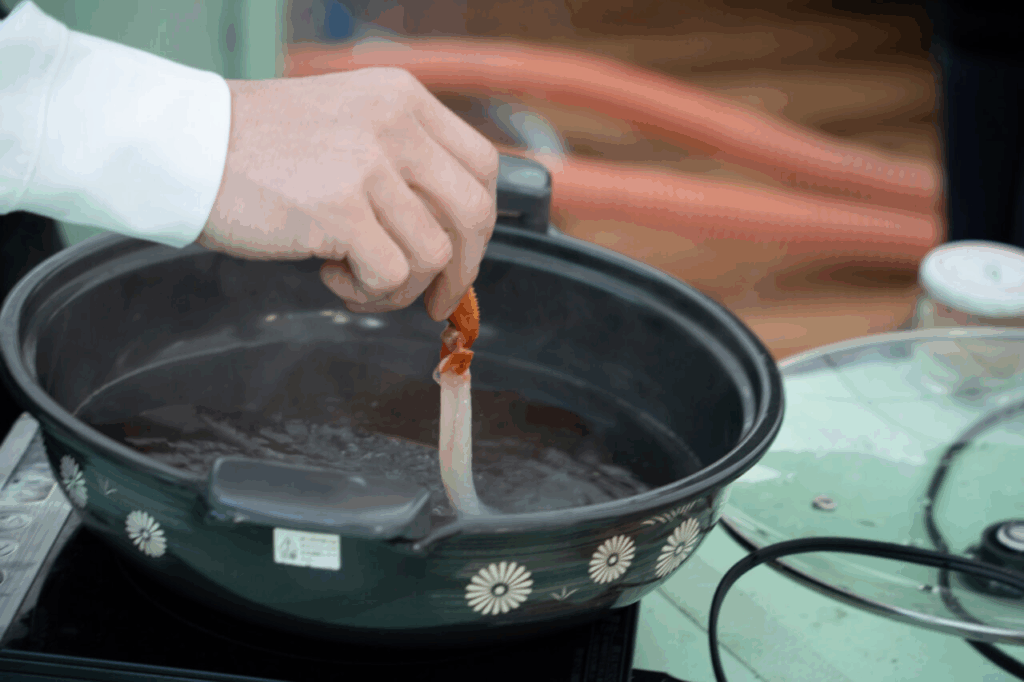
Captain Yamashita also started handling live red snow crab around 2019. Red snow crabs, which inhabit the deep sea, are vulnerable to temperature changes and are often boiled in salted water before being shipped. Compared to snow crabs, red snow crabs have more water content, and if they are not boiled in salted water, they quickly lose their freshness, and even if they are frozen, water is lost when they are thawed, which tends to spoil their taste. Therefore, “Taikimaru” selects about 100 large-sized red snow crabs per fishing trip and ships them live in a water tank at around 0°C to keep them fresh.
Shabu-shabu is the best way to enjoy red snow crab. For this reason, it is necessary to ship them live, and local inns have gradually started to sell live red snow crabs to us. We would like to increase the number of customers in the future,” said Captain Yamashita enthusiastically.
The “Daiki Maru” is working to strengthen its brand power by attaching a black tag to “Koganegani” (golden crab), which is shipped live, and a white tag to large-sized red snow crabs, an original tag of the Daiki Maru.
The “Taikimaru” is a new ship.
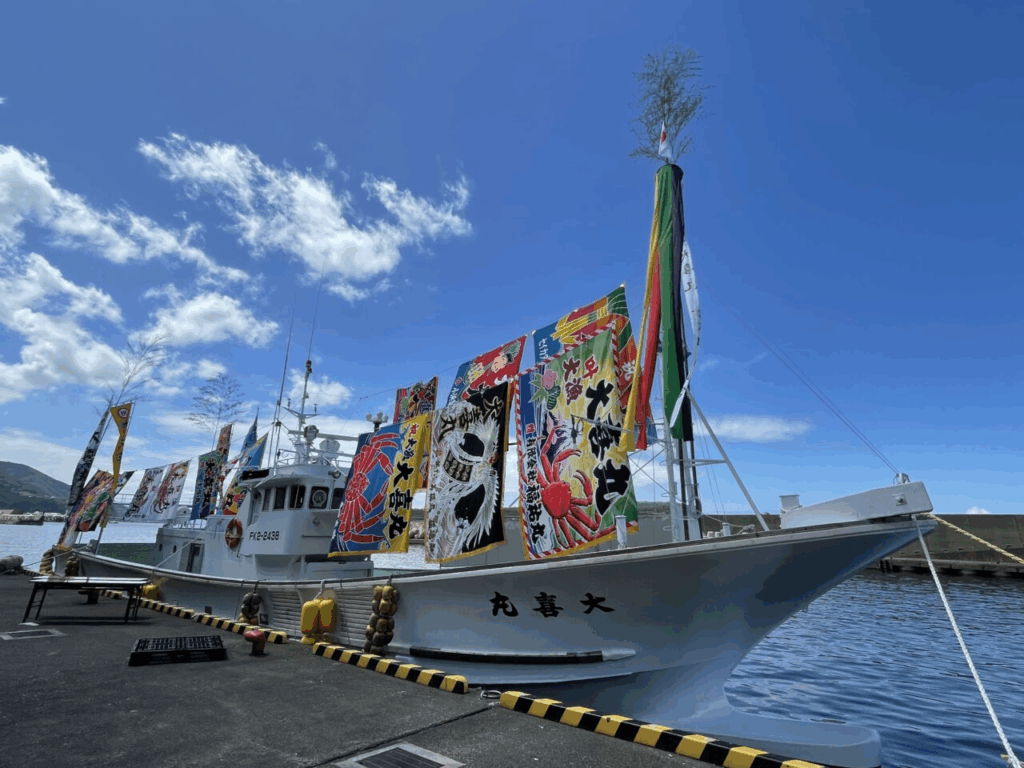
Thanks to Captain Yamashita’s numerous efforts, the annual landings of the “Daiki Maru,” which at one time fell to less than 30 million yen, have begun to increase, and in recent years have recovered to 50 million yen.
In September 2022, Captain Yamashita purchased a new vessel. The new “Daiki Maru” has greatly improved performance. The new vessel has improved its performance significantly, reducing the time to the fishing grounds from five hours to three hours, and improving the onboard environment to keep the crabs fresh, such as the live fish tanks.
Captain Yamashita says, “With the new vessel, we hope to increase shipments of higher quality red snow crabs and enhance the brand value of ‘Daiki Maru’s Red Snow Crab. He also hopes to continue to collect data on the catch of red snow crab and actively engage in resource management. Captain Yamashita’s vision of a “red snow crab fishery that lasts for 100 years” is sure to make “Daiki Maru’s” red snow crab a new brand that will rival or even surpass “Echizen Crab.



